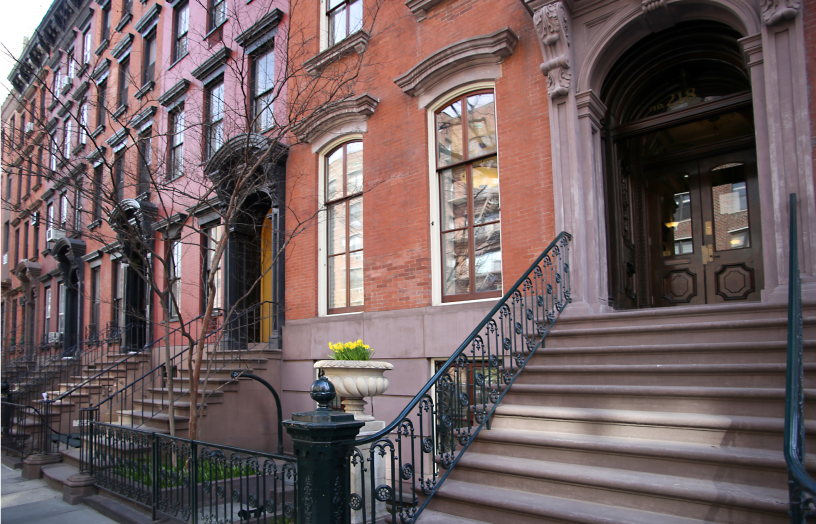
StreetEasy’s February 2020 Market Reports show rents in some Brooklyn neighborhoods nearing or exceeding those in Manhattan.
Rents in February again reached all-time highs across New York City, according to StreetEasy’s February 2020 Market Reports [i]. The StreetEasy Brooklyn Rent Index [ii] saw the largest year-over-year increase of all boroughs analyzed — up 5.5% to $2,745, the biggest jump since 2013.
Brooklyn’s rent growth was led by North Brooklyn [iii], home to neighborhoods including Williamsburg and Greenpoint, where rents rose 6.7% to $3,278. North Brooklyn is now the fourth-most expensive submarket in all of New York City — behind only Downtown Manhattan [iv] ($3,840), the Upper West Side [v] ($3,432) and Midtown Manhattan [vi] ($3,413).
While rents in Manhattan still rose by 3.6% to $3,320, the even-larger surge in Brooklyn rents has the borough closing in on Manhattan prices. In February, North Brooklyn renters were paying 4% less than renters in Midtown Manhattan, at $3,278 versus $3,413. Just one year ago, there was an 8% difference between the two submarkets — $3,072 in North Brooklyn and $3,311 in Midtown.
In February, it was cheaper to rent on the Upper East Side [vii] of Manhattan than in North Brooklyn or Northwest Brooklyn [viii], submarkets that include Downtown Brooklyn, Dumbo, and Cobble Hill.
“As rents reach all-time highs, renters are realizing they can get more space and amenities in Brooklyn for the same prices they’re paying in Manhattan,” says StreetEasy Economist Nancy Wu. “This phenomenon is causing rapid price growth in areas that were once considered to be relatively affordable, and we don’t expect this trend to slow. Renters are entering a unique time in the market right now when flexibility and adaptability will be paramount.”
February 2020 Key Findings — Manhattan
While rents reached record highs in the borough, the sales market continued to slow. The StreetEasy Manhattan Price Index [ix] fell 2.9% to $1,079,678. Upper Manhattan [x], the borough’s least-expensive submarket, bucked the trend with prices rising 2.1% to $637,846 — showing that those seeking relative affordability are still facing more competition, even amid the broader slowdown.
February 2020 Key Findings — Brooklyn
Brooklyn rents rose at the fastest pace in seven years, according to the StreetEasy Brooklyn Rent Index, and asking prices grew even faster. Still on the rebound from the L-train shutdown cancellation, median asking rents for a 1-bedroom in North Brooklyn rose an astounding 18.2% to $3,250. Northwest Brooklyn wasn’t far behind, with a 7.7% uptick to $3,204.
February 2020 Key Findings — Queens
Renters seeking affordability, space and amenities continue to look to Queens. When compared to mid-tier rent prices in Manhattan ($3,200 to $3,300), a renter can get a luxury-tier apartment in Queens for the same price, and many are taking advantage. The most expensive tier of rentals in Queens (the top 20%) saw the largest jump in year-over-year rents, growing 5.1% to $3,276.
See our Market Reports page for previous editions. Definitions of StreetEasy’s metrics and monthly data from each report can also be explored and downloaded via the StreetEasy Data Dashboard.
[i] The StreetEasy Market Reports are a monthly overview of the Manhattan, Brooklyn and Queens sales and rental markets. Every three months, a quarterly analysis is published. The report data is aggregated from public recorded sales and listings data from real estate brokerages that provide comprehensive coverage of Manhattan, Brooklyn and Queens, with more than a decade of history for most metrics. The reports are compiled by the StreetEasy Research team. StreetEasy tracks data for all five boroughs within New York City, but currently only produces reports for Manhattan, Brooklyn and Queens.
[ii] The StreetEasy Rent Indices are monthly indices that track changes in rent for all housing types and are currently available from January 2007 in Manhattan, January 2010 in Brooklyn, and January 2012 in Queens. Each index uses a repeat-sales method similar that used to calculate the StreetEasy Price Indices. The repeat method evaluates rental price growth based on homes in a given geography that have listed for rent more than once. More details on methodology here.
[iii] The North Brooklyn submarket includes Williamsburg, East Williamsburg, and Greenpoint.
[iv] The Downtown Manhattan submarket includes Civic Center, FiDi, Tribeca, Stuyvesant Town/PCV, SoHo, Little Italy, Lower East Side, Chinatown, Battery Park City, Gramercy Park, Chelsea, Greenwich Village, East Village, West Village, Flatiron and Nolita.
[v] The Upper West Side submarket includes Lincoln Square, Upper West Side, Manhattan Valley and Morningside Heights
[vi] The Midtown Manhattan submarket includes Roosevelt Island, Midtown, Central Park South, Midtown South, Midtown West and Midtown East.
[vii] The Upper East Side submarket includes Upper East Side, Lenox Hill, Yorkville, Carnegie Hill and Upper Carnegie Hill.
[viii] The Northwest Brooklyn submarket includes Downtown Brooklyn, Fort Greene, Brooklyn Heights, Boerum Hill, Dumbo, Red Hook, Gowanus, Carroll Gardens, Cobble Hill, Columbia St. Waterfront District and Clinton Hill.
[ix] The StreetEasy Price Indices track changes in resale prices of condo, co-op, and townhouse units. Each index uses a repeat-sales method of comparing the sales prices of the same properties since January 1995 in Manhattan and January 2007 in Brooklyn and Queens. Given this methodology, each index accurately captures the change in home prices by controlling for the varying composition of homes sold in a given month. Levels of the StreetEasy Price Indices reflect average values of homes on the market. Data on the sale of homes is sourced from the New York City Department of Finance. Full methodology here.
[x] The Upper Manhattan submarket includes Hamilton Heights, Washington Heights, Inwood, West Harlem, Central Harlem, East Harlem, Manhattanville and Marble Hill.
—
Inspired to find your next place in New York? Whether you’re looking to rent or to buy, search NYC apartments on StreetEasy.